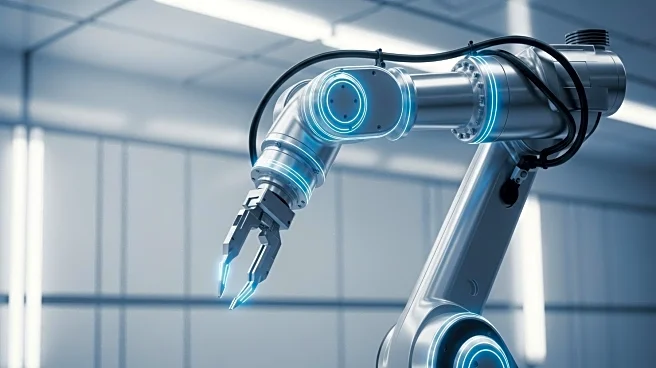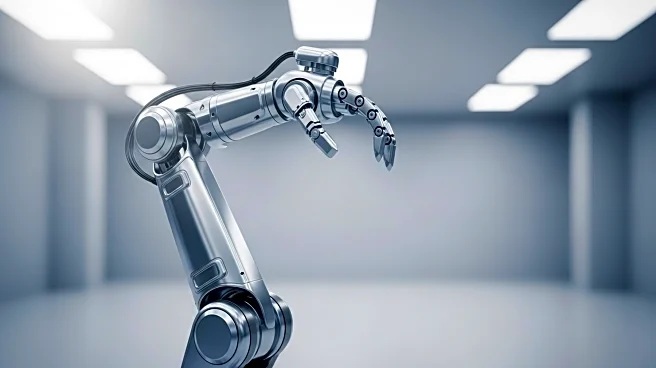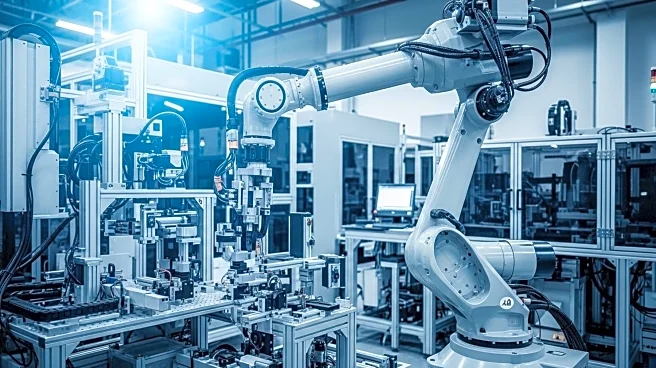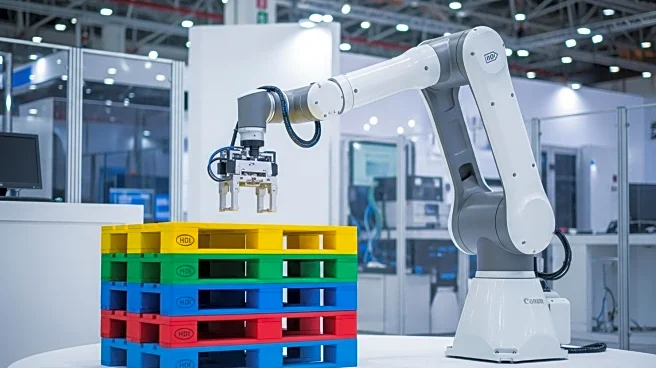What's Happening?
The Association for Advancing Automation (A3) has released the updated ANSI/A3 R15.06-2025 American National Standard for Industrial Robots and Robot Systems – Safety Requirements. This revision marks the most significant advancement in industrial robot safety standards in over a decade. The updated standard includes comprehensive safety requirements for industrial robots and their applications, as well as robot cells. It is a U.S. national adoption of ISO 10218 Parts 1 and 2, revising the previous ANSI/RIA R15.06-2012 standard. Key enhancements include clarified functional safety requirements, integrated guidance for collaborative robot applications, new content on end effectors, updated robot classifications, and the inclusion of cybersecurity guidance. The standard is available for purchase globally, with Part 3 expected to be published later this year.
Why It's Important?
The updated safety standards are crucial for ensuring the safety of millions of workers in industrial environments. By providing clearer guidance and smarter classifications, the standard empowers manufacturers and integrators to design and deploy safer robotic systems. This is particularly important as the use of industrial robots continues to grow, driven by advancements in automation and artificial intelligence. The inclusion of cybersecurity guidance reflects the increasing importance of protecting robotic systems from digital threats. Overall, the updated standards support innovation in the robotics industry while prioritizing human safety.
What's Next?
A3 plans to release Part 3 of the standard, which will address safety requirements for users of industrial robot cells, later this year. This addition will be provided at no extra cost to those who purchase the full standard now. The ongoing development of these standards indicates a continued focus on enhancing safety measures in the rapidly evolving field of industrial automation. Stakeholders in the robotics industry, including manufacturers, integrators, and end users, are expected to adopt these standards to ensure compliance and improve safety outcomes.
Beyond the Headlines
The revision of these standards highlights the ethical responsibility of the robotics industry to prioritize human safety amidst technological advancements. As automation becomes more prevalent, the balance between innovation and safety becomes increasingly critical. The integration of cybersecurity measures also underscores the need to address potential vulnerabilities in robotic systems, which could have significant implications for both safety and operational efficiency.












